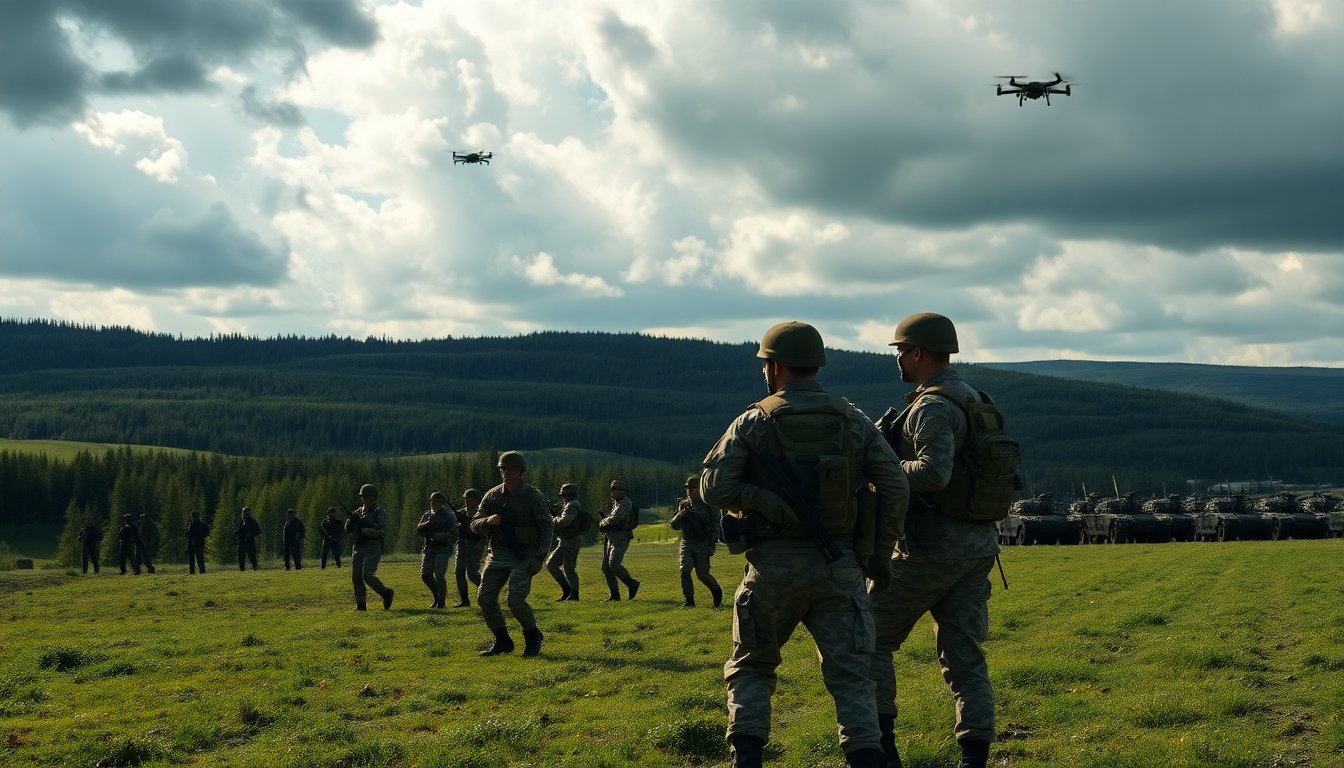Table of Contents
Tensions rise in Eastern Europe as military threats loom
The geopolitical landscape in Eastern Europe is increasingly tense. Discussions around Russia’s potential military actions are intensifying. Recent statements from officials, including German Defense Minister Boris Pistorius, have raised alarms about the possibility of conflict between Russia and NATO. Such a conflict could occur as soon as 2029, or potentially even earlier. This has prompted strong reactions from Russian officials. The Foreign Ministry has asserted its position on who they consider the aggressor, while the Kremlin hinted at the necessity of taking security measures.
In this context, independent military analysts from Israel are sounding the alarm about a more immediate threat. They suggest that Russia may target the Baltic states within the next year. Such actions would aim to strengthen Russia’s negotiating position in dealings with the United States. A major concern is the Suwałki Corridor, a narrow land passage connecting Poland and Lithuania. This corridor is viewed as a critical vulnerability for NATO.
Strategic significance of the Suwałki Corridor
The Suwałki Corridor is the only land route linking the Baltic states to mainland Europe. This corridor is crucial for both NATO and Russia. Military analyst Sergey Auslender pointed out that a limited military operation by Russia could produce rapid results. Such an action might place NATO in a difficult position and create leverage for negotiations regarding Ukraine. He noted that controlling this corridor could also enhance land supply routes for Russia’s Kaliningrad exclave.
This strategic area has attracted considerable attention, with some experts labeling it NATO’s Achilles’ heel. Various media outlets have described it as one of the most dangerous regions in the world. Despite NATO’s increased military exercises in the area, analysts like Grigory Tamar argue that the presence of approximately 10,000 NATO troops in the Baltics may not be enough to counter a full-scale invasion.
Challenges faced by NATO in the region
Let’s tell the truth: NATO could struggle to mount an effective defense if Russia were to launch a so-called ‘special operation.’ Military forces might prioritize self-preservation over a coordinated response. This shift in focus raises serious questions about NATO’s readiness.
The emperor has no clothes, and I’m telling you: Russia’s potential justification for aggression under the guise of protecting ethnic Russians in the Baltics complicates matters significantly. With more than 850,000 ethnic Russians living in these countries, the foundation for such claims is already laid.
Military analysts warn that Russia might craft a narrative of oppression against Russian speakers in Estonia or Latvia, which could serve as a convenient pretext for intervention. Auslender pointed out that Moscow could initiate a campaign framing ethnic Russians as victims, thereby legitimizing any subsequent military actions.
The Baltic Sea as a NATO stronghold
Some experts believe that the current conditions do not favor a new conflict involving Russia. Retired Major Darius Antanaitis noted that the Baltic Sea has effectively become a NATO-controlled area following Sweden and Finland’s accession to the alliance. He emphasized that any Russian naval operations would face significant logistical challenges, particularly in securing safe passage through the Gulf of Finland, bordered by NATO members.
General Richard Shirreff, a former NATO Deputy Supreme Allied Commander, raised concerns about a potential Russian offensive in the Baltics, suggesting that 2027 might be a critical timeframe for such actions. However, former Lithuanian Defense Minister Laurynas Kasčiūnas expressed skepticism, indicating that the situation largely hinges on developments in Ukraine and the overall geopolitical climate.
Military readiness and public sentiment in focus
NATO has reinforced its commitment to defend the Baltic states by implementing new readiness plans. These measures aim to ensure that member forces can respond swiftly to any aggression. Political analyst Ivan Preobrazhensky cautions that Moscow may not view NATO’s collective defense guarantees as credible. Instead, it could employ hybrid threats that avoid direct military confrontation to test NATO’s resolve.
In response to these potential challenges, NATO allies have reassured the Baltic nations of their unwavering support. Jens Stoltenberg, the former NATO Secretary General, highlighted that the alliance has significantly increased its military presence in the region since 2016. This escalation sends a clear message to Russia regarding NATO’s commitment. However, public sentiment in Germany reveals a notable ambivalence towards military service and defense readiness. Recent polls show a lack of enthusiasm among young people for active military engagement.
The evolving situation in Eastern Europe presents a complex set of challenges for NATO and its member states. The dynamics between Russian ambitions, NATO’s strategic responses, and the political will of the involved nations will be critical in shaping the region’s future stability.


